Quick Heal AntiVirus Pro
Quick Heal Technologies is an Indian company which develops security and antivirus software under its own name, and produces enterprise offerings under the Seqrite brand.
Quick Heal AntiVirus Pro is the company's starter product for home users, although you wouldn't know that from the feature list. It has a firewall, sandbox, anti-keylogger, intrusion detection, along with a 'TrackMyLaptop' antitheft system: it seems more like a suite than a standalone antivirus.
The program works on anything from Windows 2000 up, which is unusual when much of the competition now requires Windows 7 or later. (Although, of course, if you're still using the long-unsupported Windows 2000 or XP, you're got way more security problems to worry about than your choice of antivirus).
Quick Heal AntiVirus Pro is priced at $30 (£23.08) for a one-year, one-device license. There's a discount for adding more devices, but it's relatively poor, with a three-device license costing $75 (£57.70), and five devices $125 (£96.15).
By comparison, the excellent Bitdefender Antivirus Plus is more expensive for a single device, at £30 ($39) a year. But you can cover five devices for only £50 ($65), and 10 devices for £55 ($71.50).
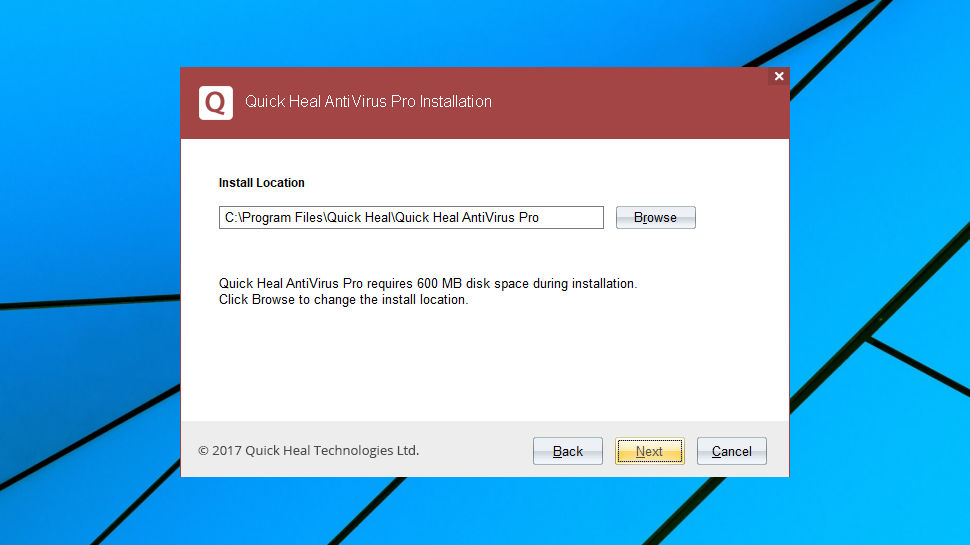
Setup
The Quick Heal AntiVirus Pro 30-day trial build was easy to find on the website, but getting it set up took more effort than we expected. We launched the installer, it displayed a couple of windows for a tiny fraction of a second, they disappeared before we could read them, and – that was it. There were no error messages, no logs or anything else to give us a clue about the cause.
Seeing an opportunity to test support, we raised a ticket explaining the problem, saying that our Windows 10 system had no other antivirus installed and we'd even disabled Windows Defender, with no change.
We hoped to get a detailed reply with Quick Heal-specific information. We would have accepted a page of generic advice (clear temporary folders, close other running apps, download and run the installer again). What we actually got, some 15 hours later, was the following:
'Well, not only do you need to turn Windows Defender OFF, but also totally uninstall it.'
As troubleshooting advice goes, this was worse than useless, as there's no way to 'totally uninstall' Windows Defender in Windows 10. Users who didn't have the experience to dismiss this as nonsense might easily waste time messing around with their system, maybe even causing other problems, trying to do what the agent had asked.
With no effective help on offer, we switched to our emergency fallback position of installing to a fresh user account. Setup proceeded without any further hassles, suggesting there was a conflict with something in our review user account.
While that can happen to anyone, it's not been an issue for the vast majority of other antivirus packages we've installed. And the real problem here isn't that Quick Heal's installation failed – it's that the installer wasn't able to report the nature of the problem, and tech support wasted our time with useless advice on 'fixing' it.
After installation, Quick Heal asked that we activate the trial to receive free updates. We clicked a button and were prompted to enter way too much personal data: name, email address, contact number, country, state and city. These aren't validated beyond the email address, though, so if you enter a contact number of ‘-’ and choose a random location in Afghanistan, for instance, the program won't care.
As a final post-install check we browsed the Quick Heal AntiVirus Pro files and folders. The package grabbed plenty of disk space at around 800MB, but added only three background processes, typically consuming around 200MB of RAM. These all appeared to be well-protected against malware, and we weren't able to delete their files, stop services, tweak Registry keys or otherwise compromise Quick Heal's protection.
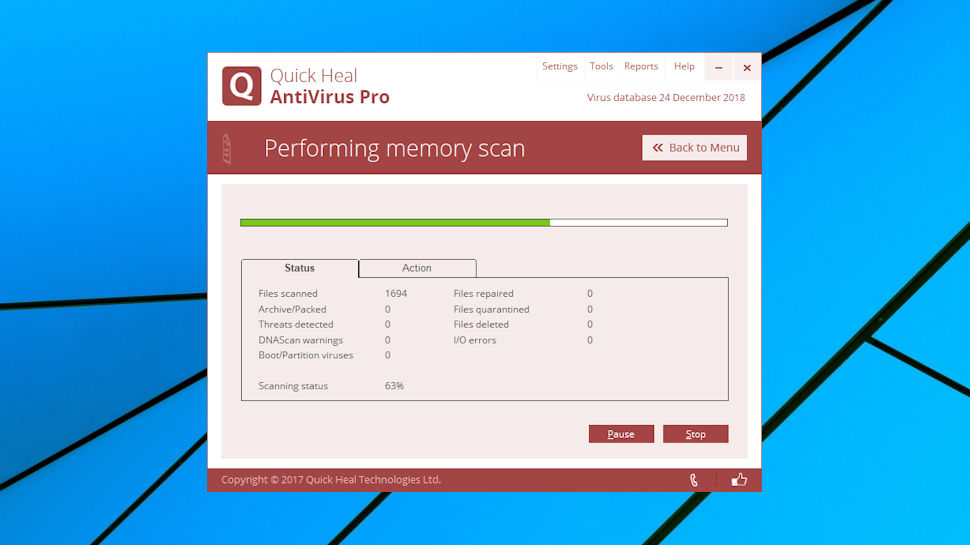
Features
The Quick Heal AntiVirus Pro interface is cluttered, and not particularly intuitive. For example, it gives the most space to large buttons highlighting four areas – Files & Folders, Emails, Internet & Network, External Drives – and we thought these would give us access to related functions, like ‘scan this folder’ or ‘check that external drive’. But, no – clicking a button displays settings only, and once the program is configured you might never need to click any of them again.
You'll probably want to start with the Scan button at the bottom of the window, then, which gives access to three scan types: Memory, Full and Custom (there's no ability to add custom scan types of your own, or tweak an individual scan type to behave differently).
You can also scan files from Explorer's right-click menu, and, in an unusual touch, you can view scan results directly from a file's properties dialog. That is, if you right-click the file suspicious.exe and select Properties, you can investigate its details as usual, or click on a new Quick Heal tab to see the scan results.
Quick Heal is smart enough to handle multiple simultaneous scans, too. Right-click a file in Explorer, select Scan, and it'll be checked immediately, even if you've a big system scan already running in the background (there are no 'sorry, you must wait until the other scan is finished' warning messages here).
The scanning process is a little slower than average, with Quick Heal taking 100 minutes for an initial scan of 660,000 test files. There is some acceleration after that, though not as much as you'd expect. When we checked the same folder later it scanned only 476,000 files in 35 minutes.
Quick Heal detected our test malware samples without difficulty, but we found the program also generated several false alarms.
A URL filter is included to block access to infected websites. This was reasonably effective in our small-scale tests, but it's not very configurable. If Quick Heal falsely flags a legitimate site, you can't bypass the warning to visit it anyway, or add the URL to a 'please ignore' whitelist.
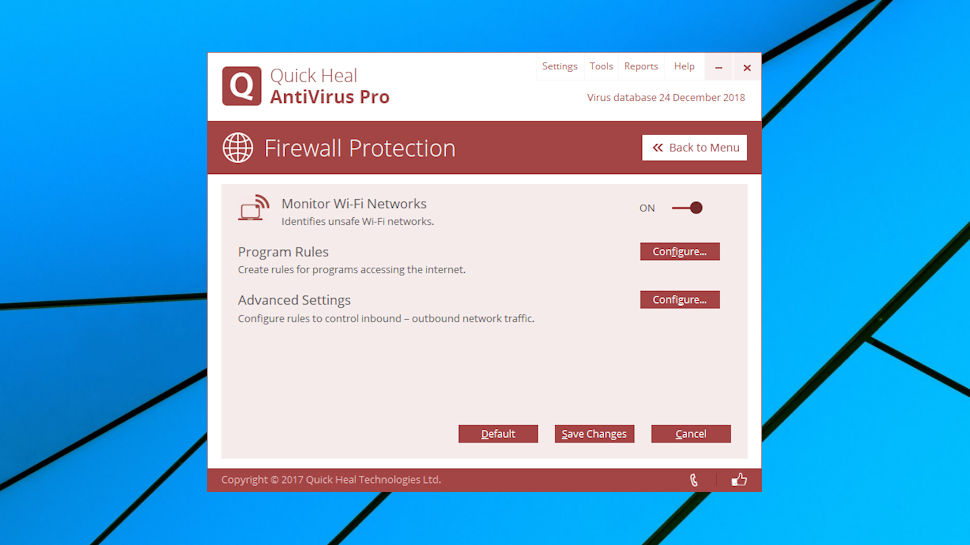
We were surprised to see that Quick Heal AntiVirus Pro has a firewall: they're normally reserved for internet security suites. This was intelligent enough to whitelist common applications, and didn't raise any pointless alerts. But it doesn't have the power or configurability of the best of the competition, and it's not particularly easy to use. ZoneAlarm gives you more functionality for free.
A Browser Security module restricts the ability of web browsers to access or modify system folders. It works to a degree, but there are limits to what this sort of approach can achieve, and it may also cause problems with regular browser usage. You'll be safer with something like Bitdefender's Safepay, a separate browser which has been engineered with extreme security in mind from the beginning.
An anti-keylogger claims to prevent malware logging your key presses to steal sensitive information. Sounds great, in theory, but it didn't block our test keyloggers.
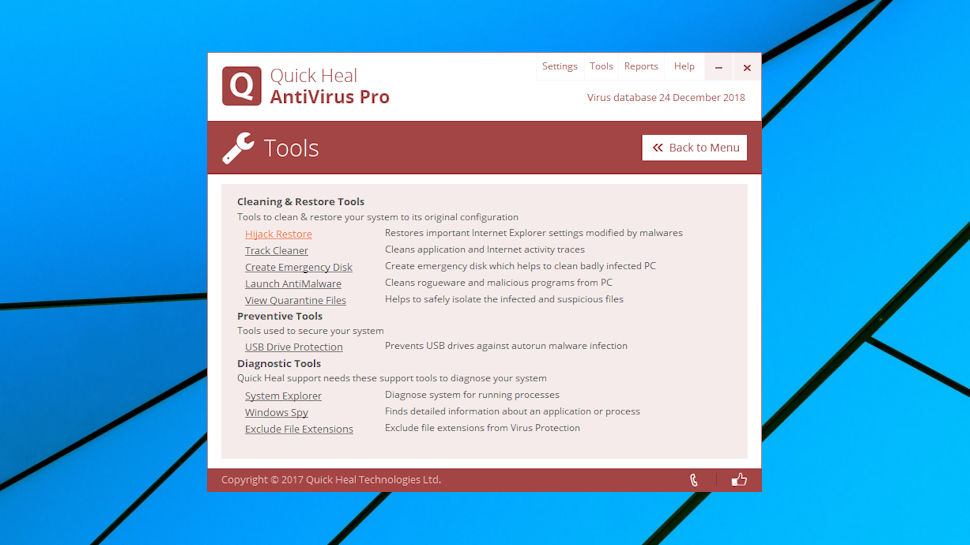
There are several bonus tools. A few might be useful, including a Track Cleaner to remove common internet and activity information. The rest aren't of any real value, and you'll get better results with the best security freeware.
Protection
Reliably measuring antivirus detection rates is a complicated business which takes considerable time, effort, and near-instant access to samples of the very latest malware. We can't get close to that, but fortunately Quick Heal has been assessed in detail by a couple of the big independent testing labs.
AV Comparatives' Real-World Protection test measures the protection of 18 top antivirus engines against the latest malware. The July-November 2018 report summarizes the results of five tests, and it placed Quick Heal in last place, with a protection score of 97.7% (the top 14 blocked 99.1% or more of the test threats).
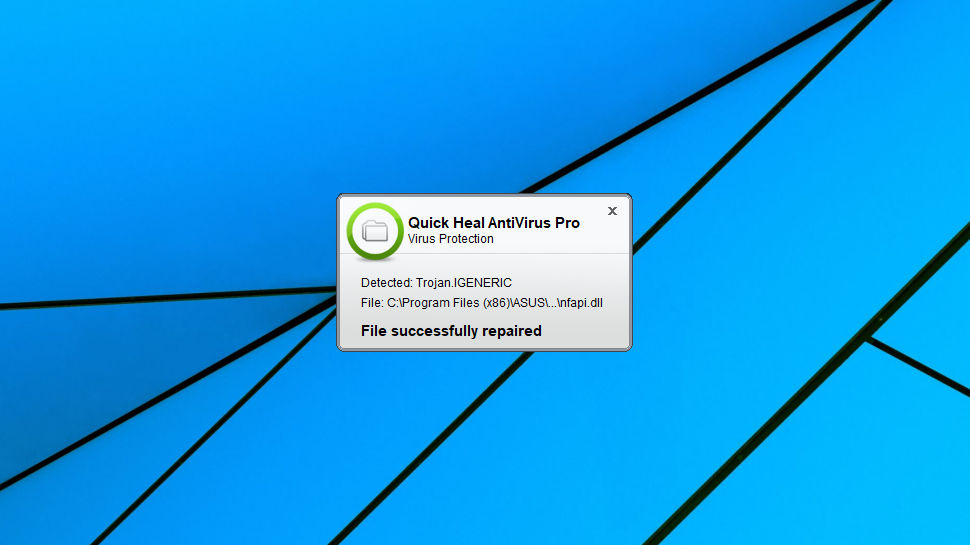
The only other major comparative test we could find was SE-Labs July-September 2018 Consumer report. This uses a more complex methodology to rank its 13 contenders, but the result was much the same, with Quick Heal Internet Security ranking a disappointing 12th place.
We completed the review by running our own ransomware simulator. Quick Heal wouldn't have seen this before, so it could only be stopped by intelligent behavior monitoring. Given the other review issues, we didn't have much hope, but Quick Heal surprised us by displaying a warning before the simulator could encrypt a single file, and asking if we wanted to block the process or allow it to continue. We chose 'Block' and the simulator was quarantined, a great result.
Final verdict
Quick Heal AntiVirus Pro has a lot of features, but none of them are particularly impressive, its antivirus engine gets a poor rating from the independent testing labs, and there's just not enough power or functionality to justify the price.
- We've also highlighted the best antivirus software in this roundup
0 comments:
Post a Comment